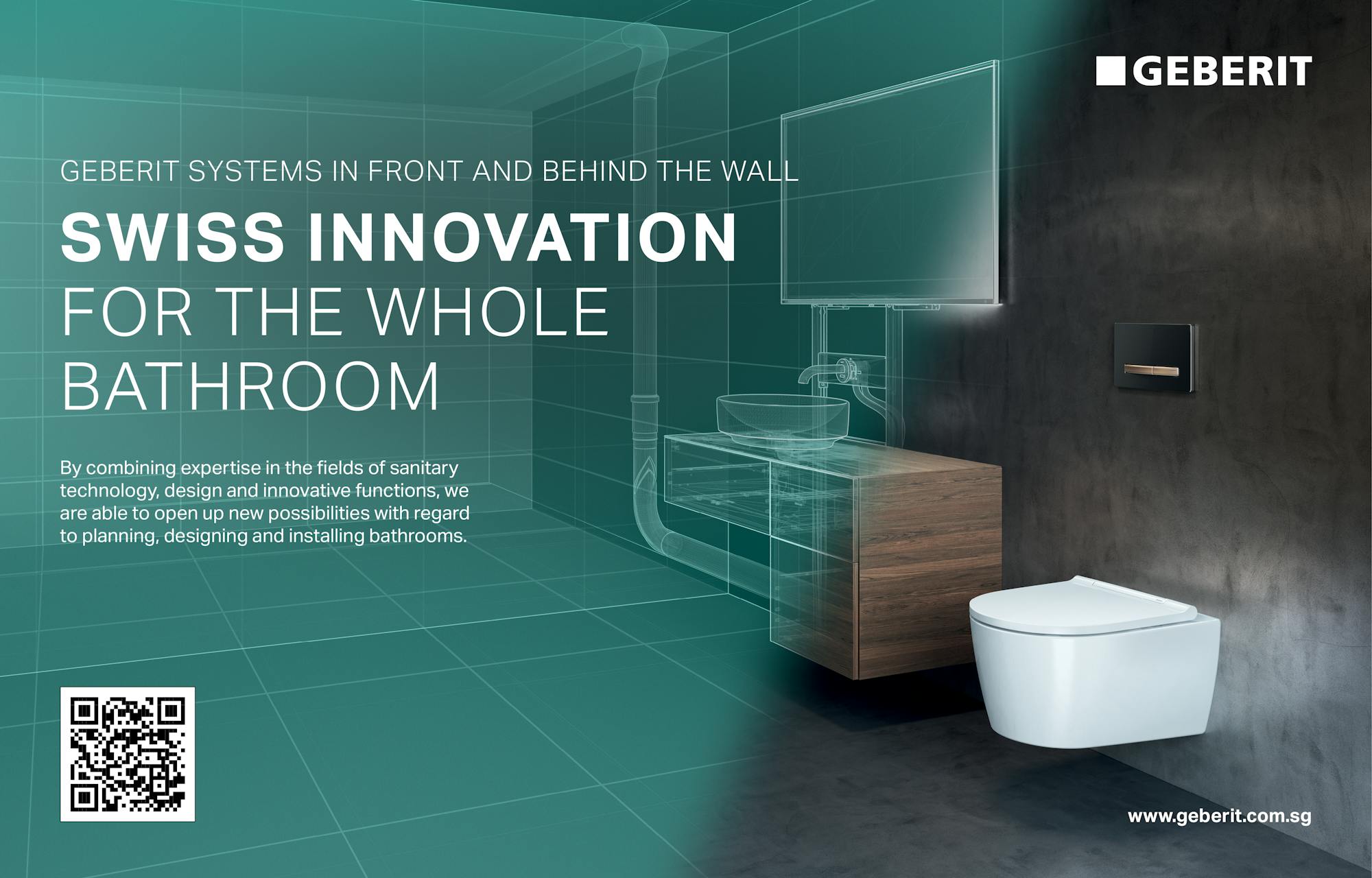Epic Homes Build 2023
Ar. Chu Hwai Lim
in conversation with:
Ar. Razvan I Ghilic-Micu, Chief Editor, The Singapore Architect

RGM: First off, congratulations for this initiative, the great track record it has built over time and the ambitions that drive your meaningful project forward.
Can you summarise for our readers what were some of the early aspirations that coalesced to become “Epic Homes“ and how have they evolved over time into their current form.
LCH: Since its inception, Epic or Extraordinary People Impacting Communities has strived to empower individuals to make a positive community impact and build a community of Epic people who support each other's growth. Epic Homes was created to achieve this goal while providing homes for the Orang Asli community.
The initiative began by building one home for Pak Cihong to build a relationship with him and his family and gain a better understanding of their lifestyle and challenges. The initiative evolved into a peer-to-peer support system between volunteer builders and local families to support and empower Orang Asli families to overcome adversity and achieve their aspirations. Epic Homes has since built 189 homes with over 7000 volunteers and aims to build at least 100 homes annually. Presently we are also exploring the use of bamboo instead of steel to lower costs and promote environmental sustainability, such that the Orang Asli community benefits from the supply chain.
Despite not being able to provide extensive long-term support, Epic Homes has witnessed the creation of several community projects and social enterprises by volunteers and local communities, resulting in improved well-being and livelihoods. Additionally, the program has empowered the timid and disempowered to make a difference. Active teams of Orang Asli builders who have completed their own villages are now helping neighboring villages kickstart new projects and train new teams.
Additionally, local champions have emerged from the completed communities and have started businesses and community projects to inspire others to do the same. Epic Homes aims to continue its work as a powerful force for change that will grow even in the absence of its founders.
RGM: There’s always a fine line between perceiving an initiative like yours as “charity” rather than “enablement” - which I believe better describes the ethos, and the tangible difference of an entrepreneurial approach to architecture. Can you describe the way you programme is a platform for upskilling and upward mobility?
LCH: Epic Homes offers families a secure base to build their future, providing them with a safe home to return to each day, giving them a sense of security to plan for their future and invest in their own well-being. The community-oriented home-building process emphasizes dignity and pride among community members. Epic Homes not only provides physical homes for families to call their own, but also instills a sense of pride and ownership within the community. This is achieved by involving the community in the process from the beginning, allowing their input into home preferences and empowering them to work together in preparing the land for construction. This sense of ownership results in a stronger and more resilient community.
Epic Homes sees the home-building process as the starting point of a long-term transformation journey towards a thriving community. It is a relationship-building platform that fosters collaboration between community members and the volunteers who build their homes. This collaboration opens the door for the community to express their needs, and Epic Homes and their new friends are there to support them. This support includes access to education and training programs, financial planning resources, and community support networks. Epic Homes works closely with communities to provide the tools and resources they need to succeed.
RGM: I am curious to hear more about past cases of communities and individuals that have moved towards financial resilience.
LCH: Epic Homes' commitment to families goes beyond building their homes. They have follow-up programs in place such as check-ins, warranty, and home insurance to provide ongoing support. The program also includes training in construction skills and business opportunities to help families develop new skills and earn additional income. Epic Homes is a comprehensive platform for upskilling and upward mobility, helping to create stronger communities and a more resilient society.
RGM: How do you measure success and most importantly, how do you tweak your methodology to ensure you can learn equally from challenges and victories, and you’re continuously able to improve and replicate your process
LCH: Success in a home-building program depends on five areas: The House, The Family, The Community, and The Volunteers.
Constructing a house that meets a family's needs and preferences, while reflecting local culture and aesthetics, is crucial.
When families are involved in the design and construction process, they take ownership of their homes, leading to better care and maintenance and participation in community development.
Community participation and progress post-build are also critical aspects of the program's success, as they lead to increased community involvement and contributions.
Volunteers play an essential role in the program, gaining positive experiences, building connections, and continuing to share resources for upward mobility.
To continuously improve the program, stakeholder engagement through check-ins, surveys, feedback forms, and monitoring and evaluation is necessary. Partnerships with field specialists can also provide valuable insights into future trends, opportunities, and alternative materials to keep the program current with changing times.
RGM: Let’s talk a little about the power of good design. How has the construction method evolved over time to minimise wastage and increase productivity, facilitating an intuitive, user-friendly and safe construction environment for low skill workers.
LCH: Epic Homes' mission is to build safe and affordable homes in three days for families in need, and they achieved it by prioritizing quality and safety over productivity and material waste. They designed 3x3 meter cube modules to optimize resource utilization and created a build manual and material specification to guide construction teams.
To ensure consistent quality across multiple projects, they provide training and designate teams for specific tasks and workflow. Builder welfare is crucial, and Epic Homes provides hydration, balanced meals, and snacks to keep their builders fueled.
They also created site safety policies, including providing safety equipment and ensuring volunteers are trained in safe working practices. With these strategies, Epic Homes has minimized wastage, increased productivity, and created a user-friendly and safe construction environment for all volunteers. They believe that by empowering their volunteers with the necessary tools, training, and environment, they can build the best homes possible for families in need.
LCH: As architects, we must recognize that our responsibility extends beyond climate sustainability and also encompasses social sustainability. This involves working alongside urban planners, policy makers, governments, and communities to champion social transformation. It is easy to become so consumed with designing for paying clients that we overlook how we can leverage our skills to assist those who require our aid but cannot afford our services. This is precisely why we have joined forces with EPIC homes, partnering with our architects and built industry collaborators to take part in this significant social initiative.
To make a genuine impact on social and economic issues, architects must go beyond the traditional silo of designing and building. We must engage in the upstream and downstream processes of community involvement, policy making, education, training, and support programs, to establish a comprehensive and sustainable social ecosystem. By doing so, we can use our expertise to make a meaningful difference in the lives of those in need.
RGM: Has this initiative gained traction over time? Who are your primary supporters and sponsors?
LCH: Since 2018, the SG Architects team has organized three Epic Homes builds, which have attracted significant interest from architects and non-architects alike. It is heartening to see many returning participants bringing along their friends and family to join the cause, as people from all walks of life come together to make a difference. We are grateful for the support we have received from our partners in the build industry, including the Singapore Institute of Architects, which contributed to this year's build. Moving forward, raising awareness and fundraising from the community will remain a crucial challenge for future builds.
RGM: What are your growth aspirations, and what type of partners you would hope to attract in the future?
LCH: We strive to make a lasting impact on the communities we serve by building sustainable homes for families in need. To achieve this, we aim to have at least one build every year. As a bridge within the local built industry, SG Architects connect contractors and suppliers to help Epic Homes improve their materials and processes.
In addition to financial and labor support, we seek partners who can contribute skills, design expertise, and resources in emerging areas of technology such as the use of innovative/recycled materials or even 3D printing technology to enable faster and easier on-site assembly. We also aim to explore opportunities to power villages using sustainable energy sources such as solar power.
RGM: Lastly, you have spent a few days on site with your ultimate beneficiaries as well as a big group of architects. What are some of the most rewarding aspects of participatory implementation?
LCH: The experience of building alongside the Orang Asli community and the homeowners was truly humbling. During the builds, it became apparent that the Orang Asli were often more proficient and efficient than the volunteers themselves. Thus, we learned that our role was not only to build a home for them, but also to empower and support them in constructing their new residence. The participatory process allowed the homeowners to take ownership of the project, acquire new skills to maintain their new home, and even assist others in the community with home repairs and construction.












